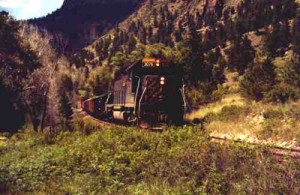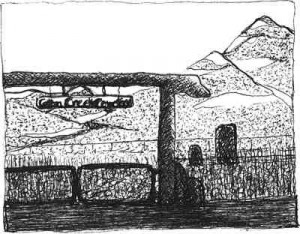Review by Martha Quillen
Great Sand Dunes – February 2006 – Colorado Central Magazine
Valley of the Dunes
by Bob Rozinski and Wendy Shattil with text by Audrey DeLella Benedict
Published by Fulcrum, 2005
ISBN 1- 55591- 523- X
VALLEY OF THE DUNES is a coffee- table book featuring dazzling pictures of Great Sand Dunes National Park and Preserve and the San Luis Valley, and it’s panoramic photos are as impressive as any you’ll see — anywhere. Photographers Bob Rozinski and Wendy Shattil capture the Valley’s phenomenal beauty, which those of us who live nearby have grown accustommed to: fourteeners rising from the valley floor; sand dunes; grasslands; fields of sunflowers and sagebrush; fresh fallen snow; golden aspen; red aspen; sunrise; sunset; wetlands; cranes; bison, deer; antelope; birds; birds; and more birds. But they also capture sights people will never see — a close- up portrait of a cricket and a tiger beetle — plus some rare sights guaranteed to make you smile: a bison eyeing an egret; an angry wren apparently shrieking at the cameraman in protest; the steamy breath of a blackbird rising in the cold morning air; a face- on shot of a porcupine climbing a tree.
This collection reveals an incredible acuity for color, texture and composition, and the photographers have thereby created some photographs that are as surprising and breath- taking as nature itself. For instance, there’s an absolutely stunning picture of white spires and eroded rock in the Wheeler Geologic area, which exudes an otherworldly quality generally only found in pictures of spiral nebulae and distant planets. And there’s a singularly colorful photo of red aspen glowing against a black- and- white background of snow- laden pinon; and another picture of twilight pink dunes glowing against the dark outline of mountains beyond; and an almost colorless stunner portraying miles of billowing clouds rising above a lonely plain.
Valley of the Dunes includes far more than the typical abundance of mountain scenery. There are photos to arouse a full panoply of emotion: beautiful, whimsical, spiritual, cute, unforgettable, glorious, adorable. This collection also includes aerial views, and numerous pictures of grass, dew, rainbows, running herds, animals, leaves, and sand.
And it sells for a mere $19.95, probably because it’s soft- covered, and only 9×11.25 inches, a good thing in my view, since you should be able to find shelf- room for it when you need your coffee table for snacks and drinks.
The only drawback is the text. The text is comprehensive, explaining the geology, geography, hydrology, botany, biology, and archeology of the Valley. But such a detailed and educational narrative would be much better served with charts and diagrams than with gorgeous photos. In fact, Audrey Benedict’s prose is so full of educational detail, I thought it desperately needed a glossary. For example, she writes about the “Rio Grande Rift,” “basaltic lava,” “Precambrian time,” “tectonic shock waves,” the “Laramide Orogeny,”and includes sentences like “Graben valleys along the flanks of the fault- block mountain chains were also dramatically redefined by these events.” In later pages, she writes about Paleo- Indian hunters and projectile points, Clovis sites, Folsom people, digs, dating, and distribution, and maps and time tables would definitely have been helpful.
Thus, the text and photos in Valley of the Dunes seem more inclined to step on one another than to complement each other. So personally, I recommend just enjoying these extraordinary photographs, and waiting for the Valley of the Dunes; Science Edition to come out — because the encyclopedic quantity of this text tends to distract from the exquisite photos.
Of course, that’s more than a little sad since the writer clearly contributed considerable effort, along with an enormous amount of information and many personal reflections on the Valley. But these photographs stand alone with just the short cutlines which are included, and these visions are simply too spectacular to miss — or to obscure with too much explanation.


